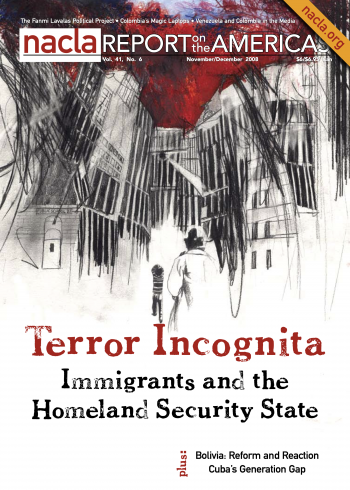Report
The U.S. government’s huge new Immigration and Customs Enforcement agency (ICE) was established to battle a new kind of domestic enemy, undocumented immigration. Yet the creation of ICE was not so much motivated by a perceived need to enforce migration policy as by a desire to build up the domestic security apparatus.
Joseph Nevins and Timothy Dunn
The Secure Fence Act of 2006 ordered the building of 850 miles of at least two layers of “reinforced fencing” along the U.S.-Mexico boundary. The utility of these barriers, as obstructions to unauthorized immigration, is questionable. But as part of a much larger project aimed at presenting border enforcement as a key component of national security, they are highly significant.
Joseph Nevins and Timothy Dunn
Immigration officials have teamed up with the Department of Justice, federal judges, and the nation’s largest private prison company to merge immigration and criminal policy. Many undocumented immigrants now face jail time pending their immigration hearing in civil court. The resulting surge in prosecutions is staggering: About 60,000 immigrants will face charges in fiscal year 2008.
In U.S. culture, fear of sexual predation has become a key social metaphor for menace in general. The victim crying out for vengeance now stands center stage in the national political drama, resulting in the creation of punitive laws directed against perceived and imagined threats, including undocumented immigrants—all by popular demand.
When in 2006 the media trumpeted the heavily Latino neighborhood of Bushwick, Brooklyn, as the city’s “next hot spot,” it was already old news for artists, hipsters, and the real estate industry. The urban planning of the 1970s proposed that “sick neighborhoods” be starved of public services so that they might die a natural death and then be reborn, attracting the right kind of middle-class “demographic.”

